The first private city in Russia, to be or not to be? Part 1
In my last article “ Design of Russian cities, where is he? ” I touched upon the theme of bad architecture in our cities. She received a wide response, gaining more than 300 comments.
Today we will talk about the more practical part and try to answer the question “What to do?” Together.
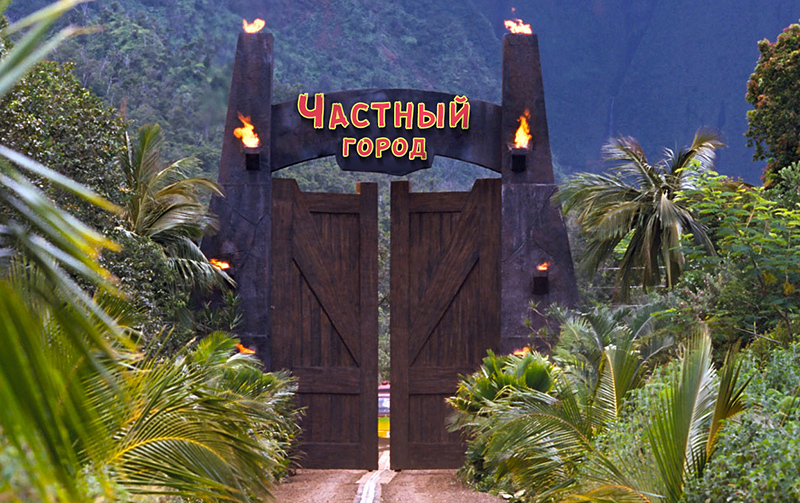
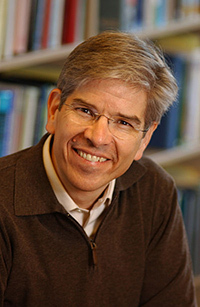 Meet Paul Romer , an American economist, who in 2009 proposed the idea of city-charters under corporate governance.
Meet Paul Romer , an American economist, who in 2009 proposed the idea of city-charters under corporate governance.
')
In his speech at TED, Romer describes his concept in which he actually proposes building cities in developing countries from scratch, whose governments are mired in corruption, bureaucracy and bad laws.
In a private city, management will be in the hands of a large company. It will create the most attractive conditions for investors and business, and they will be managed on the basis of a charter, that is, a contract, a list of rules, the most favorable economically and politically.
Rohmer’s ideas have cardinal and difficult-to-implement ideas in our country, in particular, he proposes building cities free from the laws of the country in which they are located. But it does not matter. After all, we can only take what suits us, right?
Private cities did not appear according to the Romer model, but there are classic private cities run by corporations, here are a few of them:
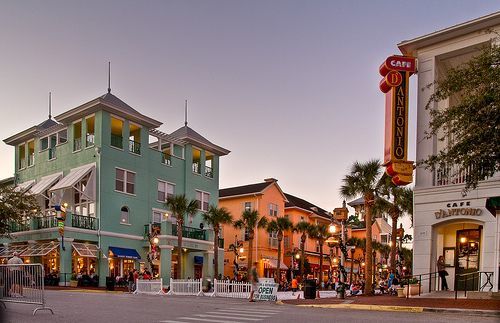
City in the United States, Florida , most of the land owned by The Walt Disney Company. The population is 7,427 people (2010 data).
The idea of this city was born in the head of the notorious Walt Disney, but it was realized only after his death.
In 1995, the Disney company played out the first 474 houses in Celebration, nearly five thousand people fought for the right to be part of it - part of a huge scenery, with fake snow and the most regulated life.
Disney City is an example of a private city, a working business model that has already been brought to life.
Lavasa is a city built with the money of a private company, located in the Western Ghats, the Sahadhri Mountains on the west coast of India. The fate of this project is not clear yet, the media predict a dark future, but this is only an opinion. The fact is that in India so low wages that few can afford to live in such a city. And the quality of construction is in question.
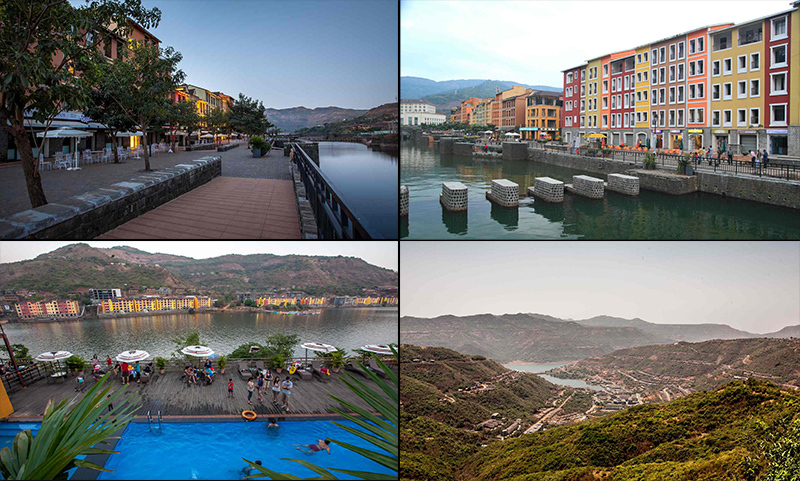
Lavasa is the brainchild of Indian entrepreneur Ajit Gulabchand - chairman of the Hindustan construction company, known for its mega-projects of bridges and dams.
This is the first city in India, which is built in accordance with the principles of "new urbanism" - the concept of the city, according to which there is a lot of free space, combined business zones and residential buildings, there are various types of social housing and natural forest parks are preserved.
Investment in the project is $ 30 billion. Estimated population of 300 thousand people.

I heard about private companies, schools, cottage villages, but never cities.
What we have now:
All cities in Russia are under the control of officials, who essentially do not care how they look, what their infrastructure is and whether its inhabitants live comfortably. Officials receive a fixed salary, their main function is to “master” the budget. There is no good motivation to do something, because if everything is good, then the budget will not be allocated next year.
Pros:
- free social security: gardens, schools, medicine;
- The mayor and the governor are replaced by democratic elections.I am writing this and can not help but smile
Are there any other advantages? I did not immediately recall.
Now look at the private city.
He is under the management of the mayor appointed by the board of directors of the management company. His task is to increase the profitability of the city. He is interested that as many people as possible come to the city. He has the motivation to maintain a comfortable environment in the city at a high level so that it is attractive against the rest. In such a city there is no temptation, for example, to build roads for 1 year, because the management company does not want to allocate funds from the budget for their repairs every year.
Tenders will not be held at the lowest price as is customary in the public sector, but in terms of price-quality ratio.
A private city is a private territory. Here you can build schools where training is based on world-wide teaching methods.
A resident in front of the management company will be protected by an agreement-charter that comes into effect when purchasing a home in the city or renting a residential or commercial area.
This list can be continued.
Minuses:
- the citizen will pay double tax: federal + to the budget of a private city;
- Kindergartens and schools will be paid. But in fact schools are now only nominally free. Very often parents pay for textbooks, curtains, repairs, etc. So this is only a conditional minus;
- the city will have its own rules and penalties for their violation. But the rules - it is a necessary measure to ensure that the city was comfortable. An example is Singapore, which is tightly regulated, but it has allowed it to become the most dynamically developing in Asia.
Looking out the window now, most of us will see almost the same thing:
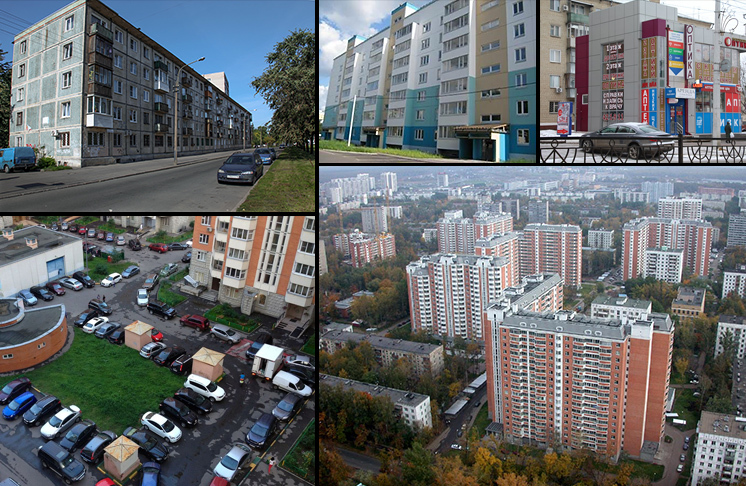
And it seems that the state does not care. Although, admittedly, Moscow is now developing well in many respects. But I will return to Moscow further in the text.
I am convinced that the urban environment affects us. It may not seem so, but when we face it day after day, we begin to adapt to a bad environment. And this is the worst. Unnoticed, we become indifferent. Indifferent to the entrances, courtyards, infrastructure and the entire urban environment. I myself was like this until I was sobered up by my first trip to Europe. I saw what could be different .
That is why the idea of a private city seemed very promising to me and this is why:
1) Realistic.
We all understand that the state never invests in such a project, but with the participation of private investment it can come to light.
2) Necessity.
Cities have no competition. The idea that this is our fate - living in bad conditions has taken root thoroughly. We need a precedent that will show that in Russia you can live differently, it will expose the problem.
3) Resource Presence:
- Land. Russia has the largest territory on Earth, we have space for implementation.
- Human. We have a lot of talented people capable of implementing the project.
- Technological. Over the past 50 years, many construction, transport and social technologies have appeared in the world. Our cities were built long before the transport and technological revolution. Many do not take into account neither modern city traffic, nor the need for a comfortable environment, nor a logical infrastructure. Everyone understands this, but changing something is quite difficult in current cities.
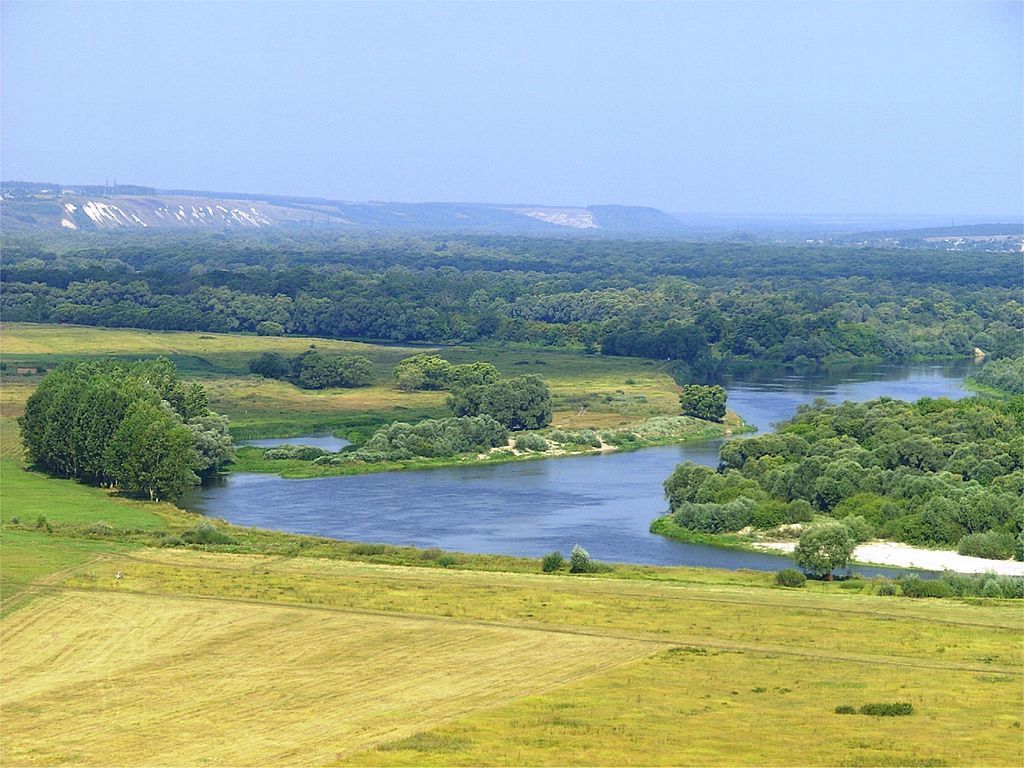
I gave the project the code name "Design City". My goal is quite ambitious: to initiate the creation of the first private technological city in Russia (even such cities are usually called “smart”). Someone will ask: "And who are you at all to declare such goals?"
I answer: I'm just a citizen of this country who is tired of waiting for the initiative from someone else. I understand that I have no experience in urban planning (and few have it). There is only your opinion and your ideas on this.
This article is not just posted on Habré. Here is concentrated the largest IT community in Russia and many talented and active people who can participate in the development of this project.
All that I will write further is my vision and it may be erroneous. The city is an environment of hundreds of thousands (or millions) of people, and I consider it unreasonable that the project of the city will be created by several people. And that is why I bring this project to the public , in order to form it through a dialogue with the public.
I created a goal on SmartProgress , where I will publish reports, as well as a group in VK for discussions.
The order of the stages is not strict. Next, I will expand each item in more detail.
Why does this project have a community?
First, to study the demand.
Secondly, the community will help shape this project, make it viable.
Thirdly, part of the community will be the first inhabitants of the city.
Leaders will appear in the community. It is necessary to involve hundreds of different specialists in such a project so that it is formed balanced and viable.
I have been thinking about how a city should be for a long time. After all, it is not enough to build it, it is necessary that it be settled by residents. That is why it is necessary to create a well thought out concept.
The first thing to do is to explore the competition. Based on this analysis, I will put forward my theory.
Competitive regions
Moscow
From the experience of living in Moscow for a long time, I can say that the city is heavily overpopulated. Subway during peak hours and festive events - it's like salmon spawning . On the roads there are constant traffic jams.
Despite this, people come here, and even if you never wanted to move to Moscow, then I’m sure that if you don’t do anything, sooner or later she will come to you:

To avoid this, you need to create new areas of gravity for people, that is, to decentralize the country.
In the field of IT, their clusters are already emerging: Innopolis and Skolkovo . They specialize in recruiting and training various IT specialists. We will not argue about their effectiveness. We just mean them.
Industrial city-forming enterprise is also not our history. These are completely different investments and objectives.
From all this was born the concept of a tourist city park . It must be built in the south of Russia. Primarily due to the fact that it is in this form that he can quickly find life.
We look at the scheme and zones highlighted in red tones. These are areas with warmer winters. Exact location to choose.

A design city can be built both in an absolutely new territory and on the site of an abandoned village.
The concept of the city park combines the best European and American architecture, adds modern park and entertainment areas and is seasoned with a pinch of Russian scope. At the exit we get a new place of attraction for everyone who goes to rest on the black or Caspian coast.
For reference: In 2011, the Black Sea coast was visited by about 11 million tourists (did not find more recent information). If even 10% of these tourists will call in the city, then for business it is a great help.
Total we get
1) City climate is more comfortable than Moscow or St. Petersburg. This is an advantage.
2) Good tourist flow. This is an aid for the development of small and medium-sized businesses in the city: cafes, restaurants, hairdressers, entertainment complexes, etc. All this will make the city alive.
3) The city will pull up a large tourist sector: guides, travel companies, agents, managers.
4) In parallel, there will be residents from other regions who are not tied to their work geographically: IT specialists, designers, managers, teachers, middle and lower level employees.
This is my theory and reasoning. In any case, I personally do not see the prospects of a city built somewhere in the tundra.
What is Design City?
It is a city consisting of honeycomb blocks separated by roads. Green areas are large amusement and recreation parks.

Why honeycomb?
This fall, experts from Columbia National University calculated that it is this type that is optimal from the point of view of movement. According to their calculations, even the classic quarters lose to honeycombs in the speed of movement on cars.
Here is an article , and here is a study in English (pdf) .
1. The absence of sleeping areas.
The sleeping area is the greatest evil of all Russian cities. Such infrastructure creates huge traffic jams due to the fact that all the work in the center!
In Design City, the entire infrastructure will be interspersed in residential buildings: shops, kindergartens, schools, cinemas, small clinics, a post office, government offices, etc. Commercial real estate will be adjacent to residential.
2. Huge theme parks of entertainment, recreation and sports.
If you look at the diagram above, you will see that each cluster is surrounded by 2 large parks. In these parks will be located sports facilities, rides, water parks.
3. Each district will have its own design code.
Registration of commercial real estate will be regulated. No red banners across the road.
4. Pedestrian is more important than a car.
The city must again be for the people. Therefore, it will be impossible to call in the courtyards. Yards will be a place of quiet rest and walks with children. Parking underground under the houses of tenants.
5. Public transport.
Trams on ring and radial roads. For example, this one, made in Russia:
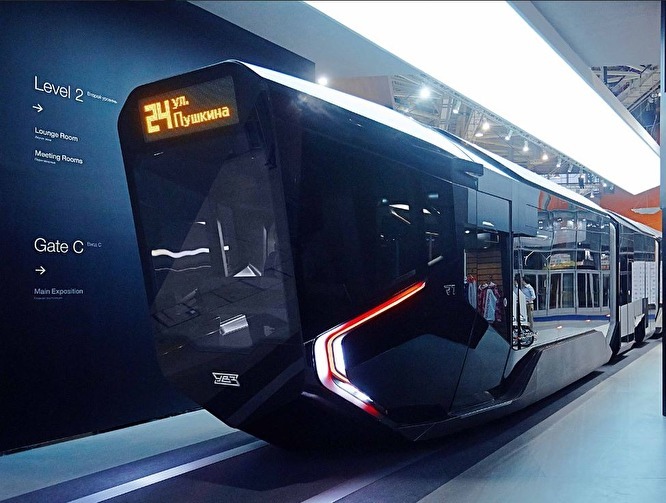
6. Not high-rise construction
The city should not be high. This always creates a large traffic load. Let high-rise building in Japan, they have no way out. They live on a small island. Or the Chinese, they have a high number. We have vast areas and a small number. Even Europeans, having small areas, do not build high cities. The historical part of Peter is also a great example.
Link to the second part


Today we will talk about the more practical part and try to answer the question “What to do?” Together.

Private city concept
 Meet Paul Romer , an American economist, who in 2009 proposed the idea of city-charters under corporate governance.
Meet Paul Romer , an American economist, who in 2009 proposed the idea of city-charters under corporate governance.')
In his speech at TED, Romer describes his concept in which he actually proposes building cities in developing countries from scratch, whose governments are mired in corruption, bureaucracy and bad laws.
In a private city, management will be in the hands of a large company. It will create the most attractive conditions for investors and business, and they will be managed on the basis of a charter, that is, a contract, a list of rules, the most favorable economically and politically.
Rohmer’s ideas have cardinal and difficult-to-implement ideas in our country, in particular, he proposes building cities free from the laws of the country in which they are located. But it does not matter. After all, we can only take what suits us, right?
Private cities did not appear according to the Romer model, but there are classic private cities run by corporations, here are a few of them:
Celebration

City in the United States, Florida , most of the land owned by The Walt Disney Company. The population is 7,427 people (2010 data).
The idea of this city was born in the head of the notorious Walt Disney, but it was realized only after his death.
In 1995, the Disney company played out the first 474 houses in Celebration, nearly five thousand people fought for the right to be part of it - part of a huge scenery, with fake snow and the most regulated life.
Disney City is an example of a private city, a working business model that has already been brought to life.
Lavasa
Lavasa is a city built with the money of a private company, located in the Western Ghats, the Sahadhri Mountains on the west coast of India. The fate of this project is not clear yet, the media predict a dark future, but this is only an opinion. The fact is that in India so low wages that few can afford to live in such a city. And the quality of construction is in question.

Lavasa is the brainchild of Indian entrepreneur Ajit Gulabchand - chairman of the Hindustan construction company, known for its mega-projects of bridges and dams.
This is the first city in India, which is built in accordance with the principles of "new urbanism" - the concept of the city, according to which there is a lot of free space, combined business zones and residential buildings, there are various types of social housing and natural forest parks are preserved.
Investment in the project is $ 30 billion. Estimated population of 300 thousand people.

Private city in Russia?
I heard about private companies, schools, cottage villages, but never cities.
What we have now:
All cities in Russia are under the control of officials, who essentially do not care how they look, what their infrastructure is and whether its inhabitants live comfortably. Officials receive a fixed salary, their main function is to “master” the budget. There is no good motivation to do something, because if everything is good, then the budget will not be allocated next year.
Pros:
- free social security: gardens, schools, medicine;
- The mayor and the governor are replaced by democratic elections.
Are there any other advantages? I did not immediately recall.
Now look at the private city.
He is under the management of the mayor appointed by the board of directors of the management company. His task is to increase the profitability of the city. He is interested that as many people as possible come to the city. He has the motivation to maintain a comfortable environment in the city at a high level so that it is attractive against the rest. In such a city there is no temptation, for example, to build roads for 1 year, because the management company does not want to allocate funds from the budget for their repairs every year.
Tenders will not be held at the lowest price as is customary in the public sector, but in terms of price-quality ratio.
A private city is a private territory. Here you can build schools where training is based on world-wide teaching methods.
A resident in front of the management company will be protected by an agreement-charter that comes into effect when purchasing a home in the city or renting a residential or commercial area.
This list can be continued.
Minuses:
- the citizen will pay double tax: federal + to the budget of a private city;
- Kindergartens and schools will be paid. But in fact schools are now only nominally free. Very often parents pay for textbooks, curtains, repairs, etc. So this is only a conditional minus;
- the city will have its own rules and penalties for their violation. But the rules - it is a necessary measure to ensure that the city was comfortable. An example is Singapore, which is tightly regulated, but it has allowed it to become the most dynamically developing in Asia.
There is a problem
Looking out the window now, most of us will see almost the same thing:
- Dreary architecture;
- Yards, cluttered with cars;
- Poor transport infrastructure;
- Killed roads and footpaths;
- Lack of normal modern parks and walking areas;
- The abundance of visual debris, in the form of advertising surfaces;
- and much more

And it seems that the state does not care. Although, admittedly, Moscow is now developing well in many respects. But I will return to Moscow further in the text.
I am convinced that the urban environment affects us. It may not seem so, but when we face it day after day, we begin to adapt to a bad environment. And this is the worst. Unnoticed, we become indifferent. Indifferent to the entrances, courtyards, infrastructure and the entire urban environment. I myself was like this until I was sobered up by my first trip to Europe. I saw what could be different .
That is why the idea of a private city seemed very promising to me and this is why:
1) Realistic.
We all understand that the state never invests in such a project, but with the participation of private investment it can come to light.
2) Necessity.
Cities have no competition. The idea that this is our fate - living in bad conditions has taken root thoroughly. We need a precedent that will show that in Russia you can live differently, it will expose the problem.
3) Resource Presence:
- Land. Russia has the largest territory on Earth, we have space for implementation.
- Human. We have a lot of talented people capable of implementing the project.
- Technological. Over the past 50 years, many construction, transport and social technologies have appeared in the world. Our cities were built long before the transport and technological revolution. Many do not take into account neither modern city traffic, nor the need for a comfortable environment, nor a logical infrastructure. Everyone understands this, but changing something is quite difficult in current cities.

Objective of the project
I gave the project the code name "Design City". My goal is quite ambitious: to initiate the creation of the first private technological city in Russia (even such cities are usually called “smart”). Someone will ask: "And who are you at all to declare such goals?"
I answer: I'm just a citizen of this country who is tired of waiting for the initiative from someone else. I understand that I have no experience in urban planning (and few have it). There is only your opinion and your ideas on this.
Appeal to the community
This article is not just posted on Habré. Here is concentrated the largest IT community in Russia and many talented and active people who can participate in the development of this project.
All that I will write further is my vision and it may be erroneous. The city is an environment of hundreds of thousands (or millions) of people, and I consider it unreasonable that the project of the city will be created by several people. And that is why I bring this project to the public , in order to form it through a dialogue with the public.
I created a goal on SmartProgress , where I will publish reports, as well as a group in VK for discussions.
I divided the goal into stages:
- To gather a community of more than 50 thousand people.
- Gather a team of like-minded people: architects, engineers, urban designers, entrepreneurs, managers, etc. ... You will need the experience of hundreds of people.
- Develop principles of the city's economy: who will live in it and what will be the work (create a portrait of a resident), how will he earn and support himself.
- Determine the technologies on which the city will be built: urban planning, engineering, environmental, etc.
- Formulate the charter of the city: the political and social laws by which citizens will live.
- Create a visual concept of the city and its device. Architecture and design of the urban environment.
- Find investors and partners in Russia and / or abroad. After the formation of the project, we will try to promote it among investors. This is the maximum plan.
The order of the stages is not strict. Next, I will expand each item in more detail.
Community
Why does this project have a community?
First, to study the demand.
Secondly, the community will help shape this project, make it viable.
Thirdly, part of the community will be the first inhabitants of the city.
Team
Leaders will appear in the community. It is necessary to involve hundreds of different specialists in such a project so that it is formed balanced and viable.
I bring the first beta version of the project for public discussion. I repeat that everything I write below is just my ideas and can and should be criticized, but it is important to offer your own ideas.
for example
Wrong: Parking in the courtyards is g ** but
That's right: Parking is not for yards, I suggest they move them into basements of houses, this will allow yards to be used for playgrounds and active pastime for adults.
Design City Ver. 0.1 beta
I have been thinking about how a city should be for a long time. After all, it is not enough to build it, it is necessary that it be settled by residents. That is why it is necessary to create a well thought out concept.
The first thing to do is to explore the competition. Based on this analysis, I will put forward my theory.
Competitive regions
Moscow
From the experience of living in Moscow for a long time, I can say that the city is heavily overpopulated. Subway during peak hours and festive events - it's like salmon spawning . On the roads there are constant traffic jams.
Despite this, people come here, and even if you never wanted to move to Moscow, then I’m sure that if you don’t do anything, sooner or later she will come to you:

To avoid this, you need to create new areas of gravity for people, that is, to decentralize the country.
In the field of IT, their clusters are already emerging: Innopolis and Skolkovo . They specialize in recruiting and training various IT specialists. We will not argue about their effectiveness. We just mean them.
Industrial city-forming enterprise is also not our history. These are completely different investments and objectives.
From all this was born the concept of a tourist city park . It must be built in the south of Russia. Primarily due to the fact that it is in this form that he can quickly find life.
We look at the scheme and zones highlighted in red tones. These are areas with warmer winters. Exact location to choose.

A design city can be built both in an absolutely new territory and on the site of an abandoned village.
The concept of the city park combines the best European and American architecture, adds modern park and entertainment areas and is seasoned with a pinch of Russian scope. At the exit we get a new place of attraction for everyone who goes to rest on the black or Caspian coast.
For reference: In 2011, the Black Sea coast was visited by about 11 million tourists (did not find more recent information). If even 10% of these tourists will call in the city, then for business it is a great help.
Total we get
1) City climate is more comfortable than Moscow or St. Petersburg. This is an advantage.
2) Good tourist flow. This is an aid for the development of small and medium-sized businesses in the city: cafes, restaurants, hairdressers, entertainment complexes, etc. All this will make the city alive.
3) The city will pull up a large tourist sector: guides, travel companies, agents, managers.
4) In parallel, there will be residents from other regions who are not tied to their work geographically: IT specialists, designers, managers, teachers, middle and lower level employees.
This is my theory and reasoning. In any case, I personally do not see the prospects of a city built somewhere in the tundra.
Lyrics
Some more statistics for the curious: Only 28% of Russians have a passport . Imagine that most of the population will NEVER be able to travel outside of Russia and the CIS. We are like fish in an aquarium. And this is really amazing. Many of us will never go to the Oktoberfest and do not ride through the canals of Amsterdam, do not go into a real French bakery and do not ride on a tram in Prague.
Design city will allow you to touch the real European architecture and plunge into its atmosphere.
Design city will allow you to touch the real European architecture and plunge into its atmosphere.
What is Design City?
It is a city consisting of honeycomb blocks separated by roads. Green areas are large amusement and recreation parks.

Why honeycomb?
This fall, experts from Columbia National University calculated that it is this type that is optimal from the point of view of movement. According to their calculations, even the classic quarters lose to honeycombs in the speed of movement on cars.
Here is an article , and here is a study in English (pdf) .
Specifications:
1. The absence of sleeping areas.
The sleeping area is the greatest evil of all Russian cities. Such infrastructure creates huge traffic jams due to the fact that all the work in the center!
In Design City, the entire infrastructure will be interspersed in residential buildings: shops, kindergartens, schools, cinemas, small clinics, a post office, government offices, etc. Commercial real estate will be adjacent to residential.
2. Huge theme parks of entertainment, recreation and sports.
If you look at the diagram above, you will see that each cluster is surrounded by 2 large parks. In these parks will be located sports facilities, rides, water parks.
3. Each district will have its own design code.
Registration of commercial real estate will be regulated. No red banners across the road.
4. Pedestrian is more important than a car.
The city must again be for the people. Therefore, it will be impossible to call in the courtyards. Yards will be a place of quiet rest and walks with children. Parking underground under the houses of tenants.
5. Public transport.
Trams on ring and radial roads. For example, this one, made in Russia:

6. Not high-rise construction
The city should not be high. This always creates a large traffic load. Let high-rise building in Japan, they have no way out. They live on a small island. Or the Chinese, they have a high number. We have vast areas and a small number. Even Europeans, having small areas, do not build high cities. The historical part of Peter is also a great example.
Link to the second part


Source: https://habr.com/ru/post/315428/
All Articles